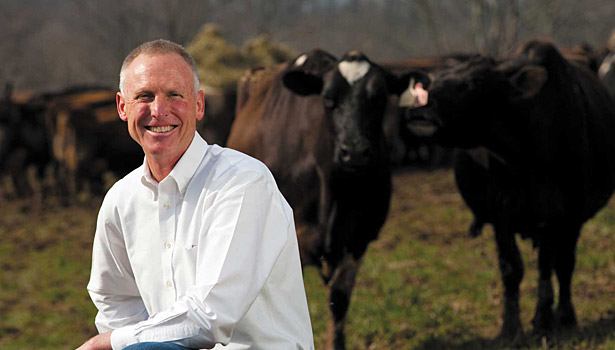January is a good time for America’s dairy industry to take stock. In doing so, we should concentrate on the needs of dairy farmers and dairy consumers. They deserve, and we all benefit from, policies and programs that lead to fairer and more stable farm pricing, and a higher perceived customer value.
People drink milk for health or taste. We should give them both. Dairy farmers want fair and stable prices. We should pursue dairy policy that succeeds in achieving that.
Dairy is enjoying a resurgence of respect and appreciation. It is recognized as mankind’s first probiotic, with kefir being the oldest-known cultured dairy product. The oldest permanent structures people built were places of worship, and the oldest things known to be placed on the altars were cheese and butter. Dairy has retained that honored position throughout history.
Milk is health food, if you do it right. Consumers are told by health professionals that milk produced from cows fed more grass and less grain has fat that is arguably the most healthful fat people can consume. Fat doesn’t cause our health woes, sugar does. God did not make milk wrong, after all.
The superior nutrition of certified organics was confirmed in an Organic Valley study, described in a December 2013 New York Times story as the most compelling proof of the benefits of organic foods. The strength of organics has been fair stable prices for dairy farmers. Its weakness is reliance on the 60-day “life” of ultra-pasteurized milk. It can never taste as good as fresh, minimally processed milk.
Our largest customer base is young mothers, the demographic for fluid milk consumption. Today, mothers increasingly want milk from cows that forage fresh green grass. Their children have sensitive tongues that prefer fresh milk. They do not value industrially produced milk with its higher antibiotic use, and higher feeding of corn and soybeans produced using pesticides and herbicides.
There are two trends. One is local, with greater differentiation, shorter shelf life and minimum processing. The other is longer shelf life and distribution chains, focusing on long-shelf-life commodity dairy product exports that must compete with every other low-cost dairy producer in the world.
We need to elevate fluid milk and remove the burden of subsidizing the rest of the high-volume, long-shelf-life and low-value commodity dairy industry. Milk’s highest value is realized when it is consumed as fresh milk. Fresh, sweet, cold milk is the Champagne of America’s dairy industry. All we have to do is put it in a container and sell it. This returns the highest farmer income.
In 2008, exports accounted for 10% of all dairy production. When the exports were down, farmers were paid below production cost. In 2014, exports rose to 15%. Exports are cyclical roller coasters; fluid milk sales are not.
Now, a quarter-of-a-century into America’s organic dairy industry, organic processors are importing dairy products from around the globe, and exporting their organic dairy farmers’ milk as highly processed commodities on the international market. Most organic milk is still ultra-pasteurized.
As organic dairy tilts toward commodity dairy, a new progressive American dairy industry is on the rise. The early adopters among America’s dairy consumers already have moved past certified organic to minimally processed, nonhomogenized, even biodynamic, 100% grass-fed or A2/A2 genetics. Consumers are leading the way, and dairy industry leaders should follow.
Unfortunately, early-adopter dairy farmers and processors trying to meet consumers’ wants are hampered by myriad barriers, including the high cost of small-scale operations and short shelf life of the highest-quality, freshest dairy products. Retail grocery store shelf access is guarded jealously by vertically integrated chains that are America’s largest milk-bottling processing companies. Now they have organic milk ultra-pasteurizing operations and are gaining market share from brand name organic.
We need the dairy industry to focus on providing the most healthful and finest-tasting milk possible, and we need the grocery industry to help make fresh minimally processed milk available to more consumers. Then we will have a bright future for dairy farmers and consumers alike.
Warren Taylor and his wife Victoria founded Snowville Creamery in Pomeroy, Ohio, to give consumers nonhomogenized, minimum-heat pasteurized milk produced from pastured cows.
Dairy Foods seeks essays from dairy processors. Contact carperj@dairyfoods.com.

Recent Comments
Discount code
Alex Shimray
Thank you for sharing this! This is really...
Thank you for sharing this! This is really...
yes, nowadays more teenagers like to have a...